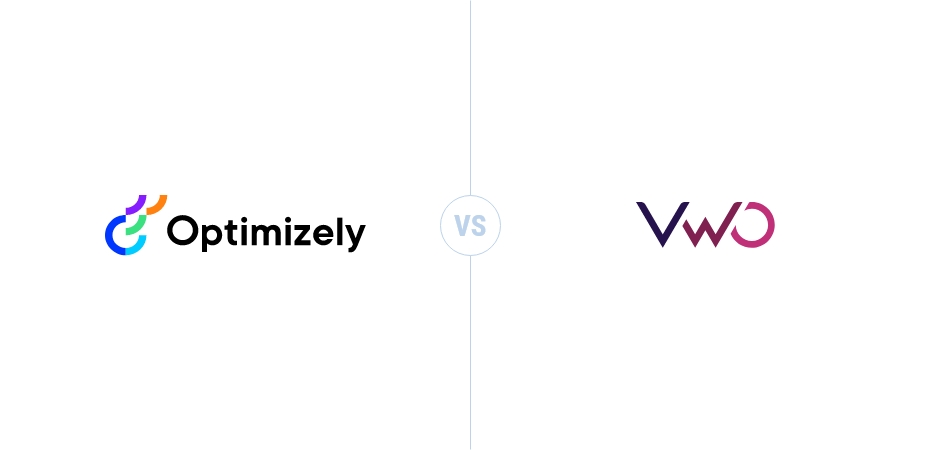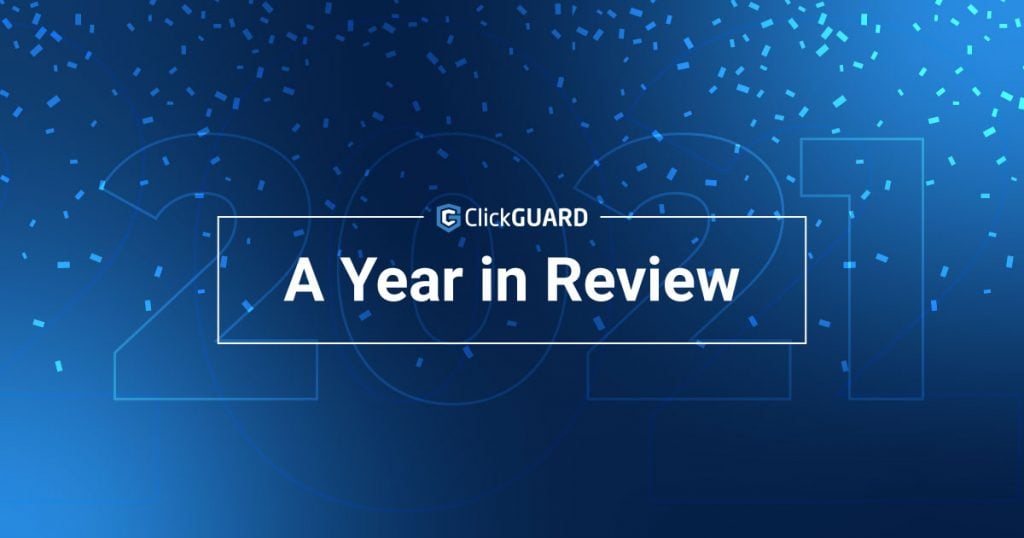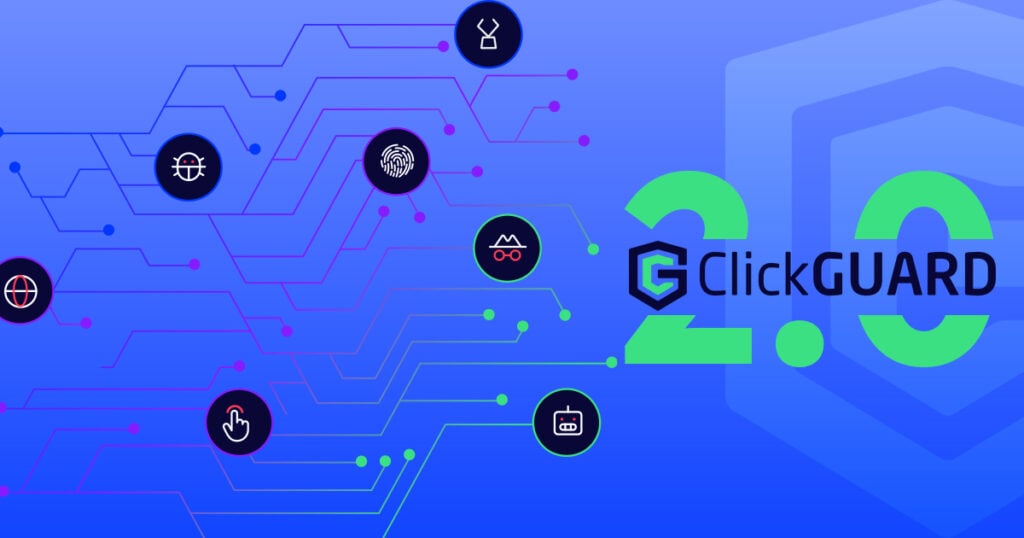There is a plethora of tools out there for marketers and business owners to choose from, but when it comes to web testing and conversion optimization two stand out from the pack: Optimizely and VWO Testing.
Both platforms can help you develop and run A/B tests, experiment with campaigns, and evaluate the impact of a customer’s experience on your website.
The question is: Which of these platforms is right for you and your business?
We did the Optimizely vs VWO research, so you don’t have to.
Optimizely vs VWO: Compared Feature Matrix
Key Features
Pricing
Optimizely: Optimizely’s plans are quoted according to a customer’s needs and there are no fixed plans/pricing available online, though you can expect to pay at least $36,000 per year, or, more likely, about $50,000 per year.
A few important things to consider as you’re making a decision on Optimizely vs VWO: Optimizely only offers annual plans and does not have a free trial. Whether Optimizely is worth an expensive annual plan (and no free version to try out first) really depends on your needs and where your business is at. Its powerful features are definitely worth the investment for high traffic websites, but only you can decide if that’s where your site or company is at or where it’s headed in the near future. Optimizely is a long-term option if you have the budget to invest in some serious experimentation.
VWO: VWO, on the other hand, has more flexible pricing plans. VWO offers pay-per-need plans and allows you to start with one product and easily add more if needed. While contracts are typically annual, VWO does offer quarterly or semi-annual payment options for ease, and sometimes offers a short contract term (though it may cost more). Another perk is that VWO provides preferential, customized pricing on all plans for nonprofits.
Ease of Use
Optimizely: Optimizely’s user interface is deemed easy to use, test results clear and understandable, and specific questions are addressed quickly by the support team. Some features can be sophisticated for the average marketer to build experiments, however, which can be a struggle.
VWO: VWO’s platform is relatively intuitive and requires no specialized coding knowledge, which makes implementation easier. Reviews say it’s especially great for small businesses and teams as an entry level tool, and for the most part the interface is easy to use and the VWO support team is quick to respond to specific questions or challenges. It has been noted through reviews that while the insight gathering tools are valuable, the testing tools can become complicated.
You’re probably starting to see for yourself, but in this Optimizely vs VWO battle, there really won’t be a clear “winner.” Each offers valuable tools and an intuitive, user-friendly platform. We’re just giving you as much information as we can to help you decide which one works better for you and your company or website.
Google Ads Integration
Optimizely: Optimizely integrates with Google Ads, enabling you to create Optimizely audiences from your campaigns and ad segments based on referral data. With this Google Ads software download, you can connect your leads to your conversion rate optimization and create similar content between your Google Ads content and your landing pages.
VWO: VWO also allows you to easily create tests for your Google AdWords traffic. The VWO knowledge base article, “Using VWO to Create Tests for Google AdWords Traffic” clearly lays out how to send data back and forth between AdWords and analytics tools by configuring your AdWords settings and tracking visitors using VWO; how to add a tracking template; and how to define custom visitor segments.
Web Experiments
Optimizely: Optimizely Web Experimentation is a platform that allows you to experiment with A/B or multivariate testing. The Optimizely site lays out a 6-step process for creating, configuring, and launching a new experiment. You can test on any channel or device with an internet connection, and Optimizely makes it easy: just paste a snippet of code on the pages you want your testing or tracking to be done, and voila! The testing begins.
VWO: VWO is an experimentation platform as well, offering the VWO Experience Optimization Platform that brands can use to implement and test different ideas and products to improve website conversion. You can use VWO to make data-driven decisions for implementing or rejecting changes on your website, and some reviewers genuinely loved how easy it was to make no-code changes in existing pages to test different variables
Mobile
Both Optimizely and VWO offer mobile testing, so, again, let’s dive a little deeper into these features so you have more background when making your Optimizely vs VWO decision.
Optimizely: Optimizely makes it easy to run tests on both Android and iPhone apps and includes software development techniques like feature flags, which allow you to turn functionality on and off during runtime. This means you can roll out new features to specific audiences to see how they perform. Cool, eh?
VWO: VWO has a wealth of information on mobile testing. Since you’re here, it’s likely that you understand the importance of an app’s user experience, but VWO’s “Mobile app A/B testing” article really gets into it: Apparently, user retention rate for mobile apps is only 32%. VWO offers mobile app A/B testing to experiment and optimize your mobile site.
Once again, VWO makes things super easy for anyone to get started by providing a step-by-step rundown of how to create an A/B test for a mobile app.
Audience Targeting
Optimizely: Optimizely allows you to target audiences with its Audience Builder, a tool that you can use to control which visitors are eligible to enter an experiment and which are excluded. After creating an experiment, you can target it to one or more audiences.
To use this feature to its highest potential, consider Optimizely’s Key Tips:
- Create audiences based on contextual, demographic, and behavioral conditions
- Use segmentation to filter and analyze the behavior of one audience among multiple
- Use mutually exclusive experiments to isolate visitors to one of the multiple tests
VWO: VWO lets you personalize tests to target audiences as well. VWO provides a comprehensive article detailing how to target a group of visitors across different test variations, and another dedicated to the Attributes List feature, which helps you target your VWO campaign to a specific audience using visitor attributes.
A/B Testing
The entirety of the Optimizely vs VWO debate boils down to which of these two platforms will serve your A/B testing needs better. Both Optimizely and VWO are made for A/B testing and experiments that, at the end of the day, are designed to help you achieve success for your conversion rate optimization efforts.
Optimizely provides a few A/B testing examples that show results from some of the world’s most innovative companies, including a 6% increase in video engagement for Discovery Communications, a 69% increase in lead generation for ComScore, and doubled conversion rates for Secret Escapes.
VWO’s A/B testing is designed to help you:
1) solve visitor paint points;
2) get better ROI from existing traffic;
3) reduce bounce rate;
4) make low-risk modifications;
5) achieve statistically significant improvements; and
6) redesign your website to increase future business gains.
Again, VWO does offer a free trial. Depending on your company or website’s needs, that may be something to take advantage of.
Campaign Segmentation
Optimizely: With Optimizely, you can filter your test results with either the default segments that Optimizely automatically captures:
- By browser type
- By campaign
- By device type
- By referrer
- By source type
Conversely, Optimizely gives you the option to add custom attributes to your experiments and campaigns and use these attributes for custom segmentation.
VWO: VWO supports both pre-segmentation and post-segmentation, which are for data collection and interpreting reports, respectively. With VWO, you can use various segmentation options to understand visitor behavior and get valuable insights into how your website is being used. VWO allows you to define segmentation through visitor type, device used, geographical location, and more.
Heatmaps
As we continue with our Optimizely vs VWO debate, let’s take a look at heatmap integration.
Optimizely: Whether you’re already using an existing heatmap platform or a custom analytics database, Optimizely makes heatmap integration pretty simple. Heatmaps can also be integrated with A/B tests within Optimizely, so you can get a clear picture of how users engage with your test variations.
VWO: VWO has a navigation mode that lets you browse different pages on your website while viewing the visitor data, as recorded by heatmaps, on each element of those pages, which allows you to see behavior on various elements like dynamic URLs or pages behind logins. VWO also includes Clickmaps to see where users are clicking and Scrollmaps to find out where visitors scroll to and what they’re missing.
Landing Pages/Web Forms
Optimizely: Optimizely has a landing page builder that doesn’t require specialized coding knowledge, and also determines when there is a statistically significant difference you should pay attention to regarding landing page variation and converting visitors. They also have an article detailing the 3 key ingredients for optimizing your landing pages – good stuff!
VWO: VWO, forever comprehensive, takes you through the basics and more technical details of landing page optimization, including:
- The ideal landing page optimization process
- How to get started with landing page optimization
- How to make your landing pages more effective
- Landing page metrics you should track
- A/B test landing pages
- Common landing page optimization mistakes
As you can see, one of the great things about VWO is the plethora of tips, tricks, and strategies they include for free on their website.



